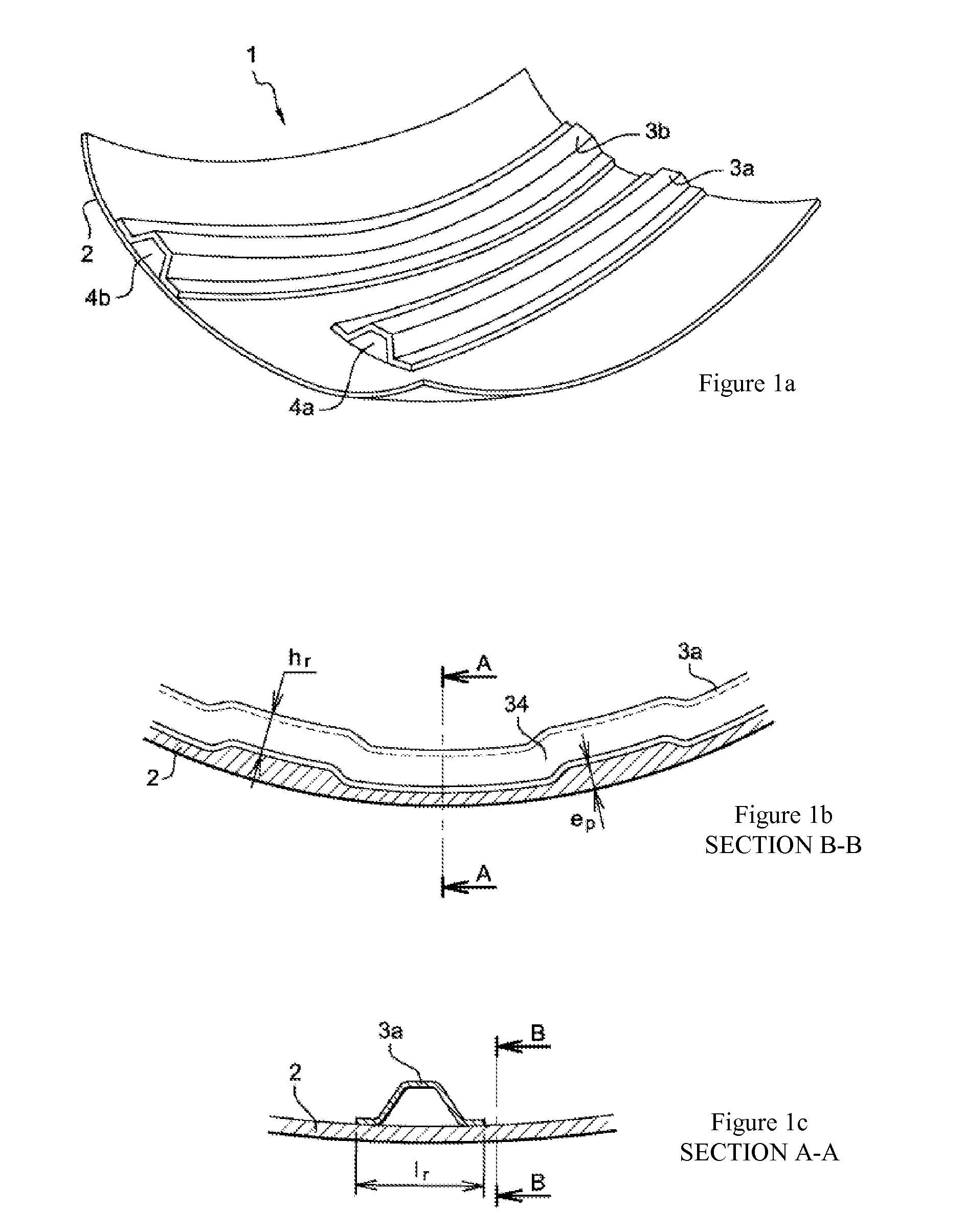Method of producing stiffened panels made of a composite and panels thus produced
a composite material and production method technology, applied in the field of composite material complex shapes, can solve the problems of difficult extraction of cores, undesirable cavities in composite materials, high cost on the industrial scale, etc., and achieve the effect of improving the homogeneity of mold temperatur
- Summary
- Abstract
- Description
- Claims
- Application Information
AI Technical Summary
Benefits of technology
Problems solved by technology
Method used
Image
Examples
Embodiment Construction
[0039]FIGS. 1a, 1b and 1c represent, as a non-limiting illustration, a stiffened panel which is made of a composite material, which comprises a skin 2 and stiffeners 3a, 3b on one of the faces of the skin, and which is produced advantageously according to the aspects of the disclosed embodiments.
[0040]The composite materials to which the disclosed embodiments refer are preferably the materials that comprise fibers, such as, for example, glass, carbon or aramide fibers of the Kevlar® type, which are trapped in an organic matrix, such as, for example, a polyester resin or an epoxy resin, and used for the production of panels and pieces presenting varying degrees of relief.
[0041]These types of composite materials are used extensively today in numerous industrial sectors, particularly in aeronautics, for the production of pieces used in airplane structures that must bear large loads.
[0042]The skin 2 is a structure of small thickness compared to its other dimensions, the length and the w...
PUM
| Property | Measurement | Unit |
|---|---|---|
| temperature | aaaaa | aaaaa |
| flexible | aaaaa | aaaaa |
| thermal expansion coefficient | aaaaa | aaaaa |
Abstract
Description
Claims
Application Information
 Login to View More
Login to View More - R&D
- Intellectual Property
- Life Sciences
- Materials
- Tech Scout
- Unparalleled Data Quality
- Higher Quality Content
- 60% Fewer Hallucinations
Browse by: Latest US Patents, China's latest patents, Technical Efficacy Thesaurus, Application Domain, Technology Topic, Popular Technical Reports.
© 2025 PatSnap. All rights reserved.Legal|Privacy policy|Modern Slavery Act Transparency Statement|Sitemap|About US| Contact US: help@patsnap.com



